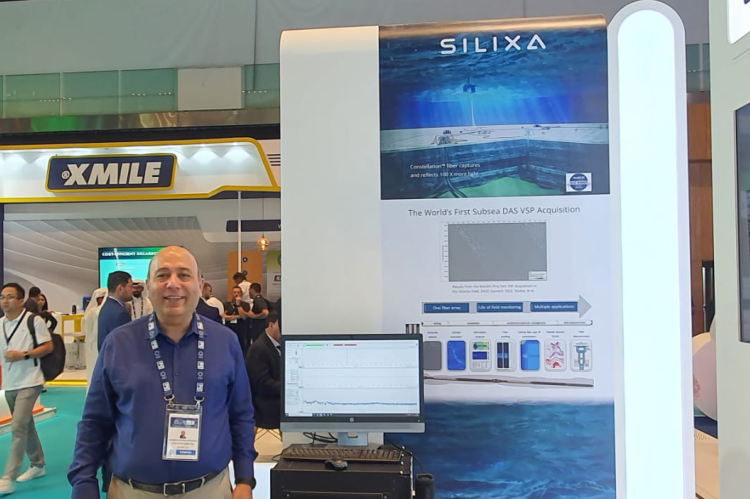Current Developments in Well and Pipeline Monitoring: Distributed Acoustic Sensing Technology

During ADIPEC 2023 we met with Garth Naldrett, Chief Product Officer of Silixa and talked about current developments in Well and Pipeline Monitoring.
As oil becomes harder to find, many reservoirs are located at greater depths and further offshore, and there is an increasing need for reliable mechanisms for transmitting sensor signals over long distances deep underseas.
While conventional electronic-based monitoring systems have been in use for years, they require complex wiring, a limited number of sensor integrations, and are prone to failure at high temperatures.
This reduces their effectiveness and efficiency, making Distributed Acoustic Sensing (DAS) technology a better option in well monitoring.
DAS is a fiber optic system that leverages Rayleigh scattering. The technology uses a fiber optic system as a sensing element to make measurements that are then analyzed to relay critical data in monitoring operations.
In the Oil and gas industry, optical fiber sensing can continuously monitor underground infrastructure, such as hydrocarbon producing wells, CO2 injection wells and pipelines, by checking in real-time for interference, obstructions, leaks, and faults.
According to Garth Naldrett fiber optic DAS technology is quite new in the Oil and Gas industry.
"It's only been in the industry for about 15 years, particularly acoustic sensing, which is quite young for the conservative industry. What makes it unique is it's a distributed sensor. It has a high density of measurements. We get measurements every one meter along the fiber," explains Naldrett.
"In addition to this high spatial density it also continuously records in time, giving high-resolution time and space-based measurements. If there's any impact, leaks, or interference in the well or on the pipeline, we can detect it very quickly and precisely as to its location. We already have this experience from the downhole installations," he added.
Founded in London, UK, Naldrett revealed that Silixa was working on multiple projects in Europe and beyond, installing fiber optic sensing cables to help companies monitor their wells and pipelines.
"As the product has been introduced into more regions, we've put various hubs into place. Our first hub outside of London was Houston, so we're servicing the unconventional basins in Houston and offshore, the Gulf of Mexico. Since then, we've established offices in Montana, in the US, Calgary, in Canada, and we've just placed our first person in the United Arab Emirates," Naldrett explained.
"So, we're starting to expand into other regions as we get the commercial uptake. In terms of regional distribution, we've now installed systems on every continent, including Antarctica. We run projects in Antarctica: permanent installations for glacial thickness monitoring. So, every continent's got a system on it."
